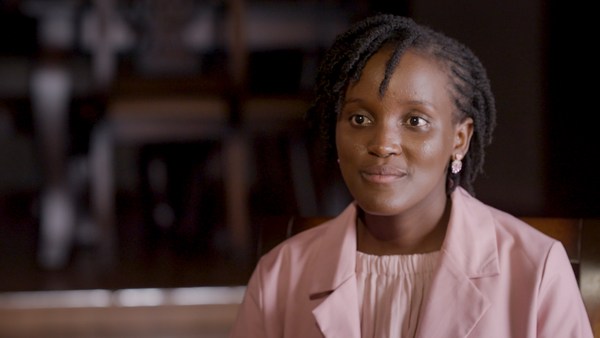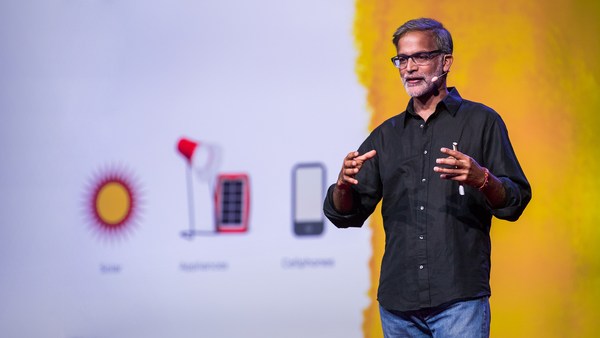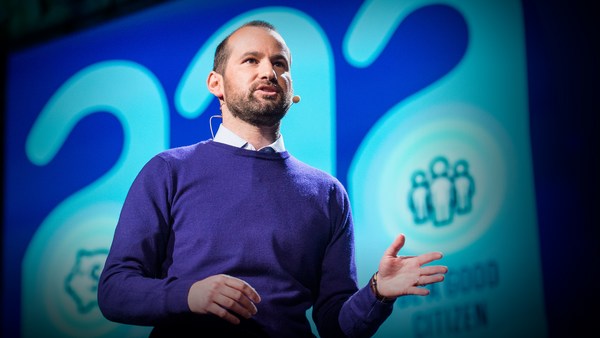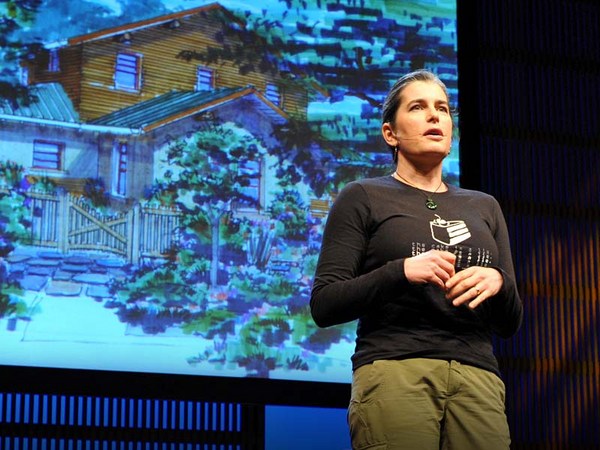In 1994, electricity came to my mother's childhood village in Zomba, Malawi, where my grandmother still lived. I used to love going to Zomba as a kid. I was a typical city brat romanticizing village life. I used to love going, I used to get to carry water on my head. And I remember the smell of kerosene as my grandma told stories at night, and my grandpa would be nodding off to these stories.
But when that electricity came, it meant no more stinging eyes, for my grandma, from the smoke from the outside kitchen. It meant no more bedtime at seven. There was news to be watched. And more importantly, for my cousins, Manuel and Charles, it meant a magical thing called "more time" -- more time to pursue hobbies and interests, and to study. They both went on to pursue further education. And for the village, it meant shops could stay open for longer, there was more jobs and a stronger local economy.
Electricity came to Zomba because the main grid extended there, but for so many, the wait is still ongoing. The most recent data shows that less than 15 percent of Malawians have access to electricity. For sub-Saharan Africa, the number of people without electricity is more than 500 million. Globally, that number is even higher.
There is a solution that could mean people get more access sooner: mini-grids, localized stand-alone energy systems to power individual communities. They usually consist of a solar panel array, a battery bank and backup system connected to a small distribution network. And in areas near rivers, they can be connected to hydropower turbines.
So how do we get more people more access, more quickly? The traditional process of electrification is slow and expensive. Utilities are often cash-strapped, rural electrification agencies are often underfunded, governments have many competing priorities. But we need electrification not only because it provides opportunity like it did for Zomba but because lack of electrification means more environmental damage. Where there is no power for industry and homes, people who can afford to use diesel generators. And for the vast majority of rural communities, they resort to cutting down trees, for firewood, for cooking and lighting. It is estimated that, at current rates of consumption, Malawi's demand for firewood could outstrip sustainable supply by 2025. And if we look at coal-fired power stations, which, until recently, have been cheaper to deploy than renewable energy, they exacerbate climate change, leading to more extreme and destructive weather.
For example, warmer temperatures make cyclones wetter, more frequent and more intense. Malawi suffered from three devastating cyclones in the last two years, and is still reeling from the effects of Cyclone Freddy today.
So what's the solution? A typical mini-grid, on the other hand, can provide about 50 kW of clean, green, renewable energy, and connect about 200 households and 20 businesses. They can be quicker and cheaper to deploy than extending the main grid and can be plugged into the main grid, should it arrive. They create jobs during their construction and through ongoing maintenance. And they connect local health centers, schools. And they provide opportunities for entrepreneurs in those communities to start businesses.
But mini-grids have a problem. This is because they often serve hard-to-reach areas, where people's only use for electricity is lighting or charging phones, and they haven't really had the need or the access to appliances for their homes and businesses. This means that the money that they pay to electricity providers or the mini-grid developers is very little. We know the impact that electricity can have on an individual, the community and the wider economy, so if we can't rely on governments to provide, we need the private sector. And for that reason, mini-grids need to be more profitable for those investors. As of now, the return that a mini-grid developer will get from a typical installation is about five to six percent. We think this number needs to be more like 12 percent to compete with other infrastructure investments, such as commercial and industrial solar or toll roads.
So ... After a career as an engineer -- thanks, in part, to the not-so-subtle influence of my dad --
(Laughter)
and then as a management consultant, this dilemma brought me to my current role, leading the Mini-Grid Innovation Lab at CrossBoundary. Our mandate is to experiment with the mini-grid business model, to make it more profitable, and therefore a more appealing way to spread electrification across the continent.
To make mini-grids more profitable -- pretty straightforward. One of two things needs to happen. Revenues need to go up or costs need to go down. On the revenue side, we've tested appliance financing. Appliance financing, not a new concept, it's been used right here in the United States, in the 1920s and '30s. Who’s seen the show “1923”? Great. It's a great show, Harrison Ford, Helen Mirren. There's a great scene in it, where a salesman is trying to convince the ranchers to buy washing machines and electric cookers, on credit, for this new invention called "electricity," because their lives will become a bit easier. And the retort from the ranchers is -- and please indulge my attempt at a Southern accent here --
(Laughter)
"It ain't more leisurely, because we have to work more to pay for all that stuff."
(Laughter)
(Applause and laughter)
It's partially true, right? Capitalism. But it did happen, and it worked by private lenders and government agencies extending small loans to homeowners so they could purchase washing machines and electric cookers on credit, increase their electricity bill and generate more revenues for those utilities. And in return, their lives were made a little bit easier.
We tried the same thing in Long’ech, Lake Turkana, Kenya, where we financed an ice machine for a local entrepreneur who was also a mini-grid customer there. Before the ice machine, he used to buy fish from local fishermen, dry that fish and transport it to a nearby town for sale. The ice machine allowed him to preserve that fish fresh, transport it to the marketplace fresh and sell it at six times the price he did than the dried fish. He also consumed 50 times more than the average consumer on that mini-grid, and this increased the revenues of that mini-grid by 25 percent.
On the cost side, we've looked at less expensive ways for storage, for solar-powered minigrids. Batteries from the US, Europe, Asia, no longer strong enough to be used in electric buses, can be used a second time as backup power and storage. These batteries can be up to 40 percent cheaper than new ones and will become more accessible as the EV sector scales globally.
There is a last example I want to share about what is possible. This example is in Tanzania, in an agroforestry and tea-growing area. Prior to the minigrids, the local economy centered around employment in the tea estates and factories, and timber factories. The availability of electricity has brought about a boom in businesses using agroforestry by-products. One entrepreneur, Martino, opened a carpentry workshop. He makes window frames and doors for the local village and nearby towns, and he makes desks for the local schools. Business is booming because this community has increased disposable income. They even have a thriving laundromat. So, you know, those washing machines are useful after all. But this mini-grid community consumes 10 times more than the average minigrid community, and these revenues drive what is needed for profitability.
So these innovations are making the investment proposition for mini-grids more attractive. The African Minigrid Developers Association reports that connections grew 45 percent from 2020 to 2021. But at the current rates of progress, the World Bank estimates that 670 million people will remain without electricity by 2030. That’s 670 million people still using kerosene lamps, still cutting down trees for firewood, and losing that most valuable of resources: time. Bed by 7pm. We cannot afford to wait for the electrification of our continent, nor can we afford to do it unsustainably. The human cost is tangible, real and too close to home.
Thank you.
(Applause)





